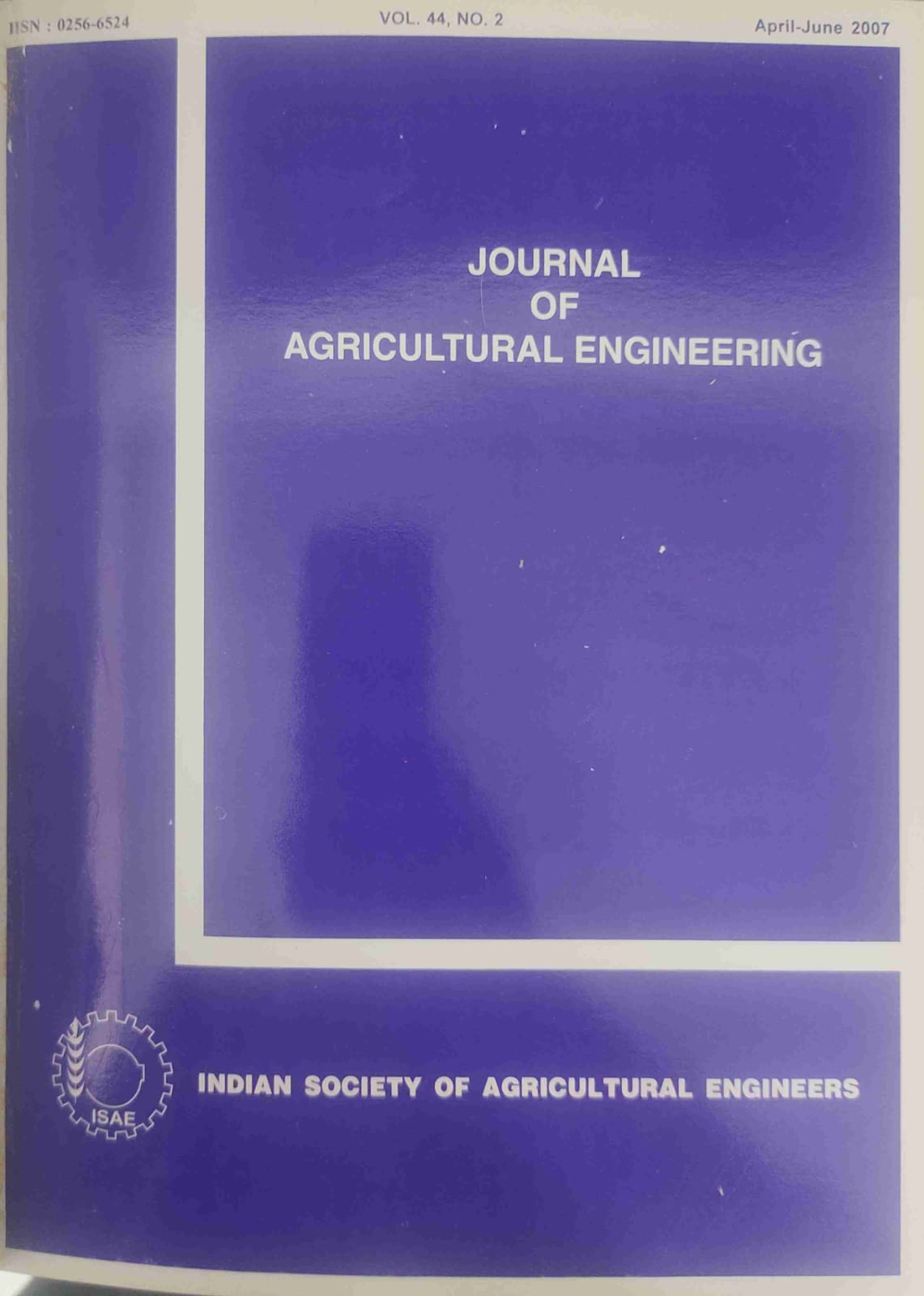Salt Uptake by Acacia biflora Saplings from Saline Root Zone
DOI:
https://doi.org/10.52151/jae2007442.1264Abstract
Waterlogging and subsequent soil salinization are the two major causes of degradation of irrigated agricultural lands. Subsurface Drainage Technology (SSDT) is an effective control measure for both. However, this technology is expensive and has an associated problem of safe disposal of the drainage effluents. These features have limited its large-scale adoption in India. Biodrainage is considered by some as an alternative, in which water and salt tolerant plant species are grown to remove the salt solutions from saline and waterlogged lands in an eco-friendly and economical manner. A pot experiment was conducted with saplings of Acacia biflora to determine the plant's salt uptake capacity from the root zone that was made saline by irrigation with water of different salt concentrations for a period of 6 months. The consequent plant sap salinity was measured and salt balance analysis was carried out to ascertain salt migration from the soil to the plant. The study revealed that the plants irrigated with the water of highest salinity removed 28.7 g of salt in comparison to the plant under control, which removed 8.4 g of salts. Even the highest salt removal by Acacia biflora saplings was negligible as compared to that by conventional subsurface drainage system. To portray bio-drainage as a land reclamation option, confirmation of salt uptake from saline lands having established plantation needs to be carried out.
References
Chhabra R; Thakur N P. 1998. Lysimeter study on the use of biodrainage to control waterlogging and secondary salinization in (canal) irrigated arid/ semiarid environment. Irrigation and drainage systems, 12, 265-288.
FAI. 2004. Fertiliser Statistics 2003-2004. The Fertiliser Association of India, New Delhi.
Heuperman A F. 1999. Hydraulic gradient reversal by trees in shallow water table areas and repercussions for the sustainability of tree-growing systems, Agric Water Mgt, 39,153-167.
IPTRID. 2002. "Bio drainage - Principles, experiences and applications" Knowledge synthesis report No.6. Publ. of the International Programme for Technology and Research in Irrigation and Drainage (FAO), Rome.
Jackson M L. 1973. Soil Chemical Analysis. Prentice Hall, New Delhi, India.
Kapoor AS. 2003. Biodrainage status in India and other countries. Indian National Committee on Irrigation and Drainage, New Delhi, India.
Sarangi A; Dash J; Bhattacharya A K; Singh A K. 2005. Software for field experiments with irrigation by saline water, Agri. Enging Today, 29 (3-4), 54-60.
Singh M; Bhattacharya A K. 2005. Sustaining agriculture in disaster prone coastal lands through subsurface land drainage technology (SLOT). Agric Engng Today, 29 (1-2), 40-47.














